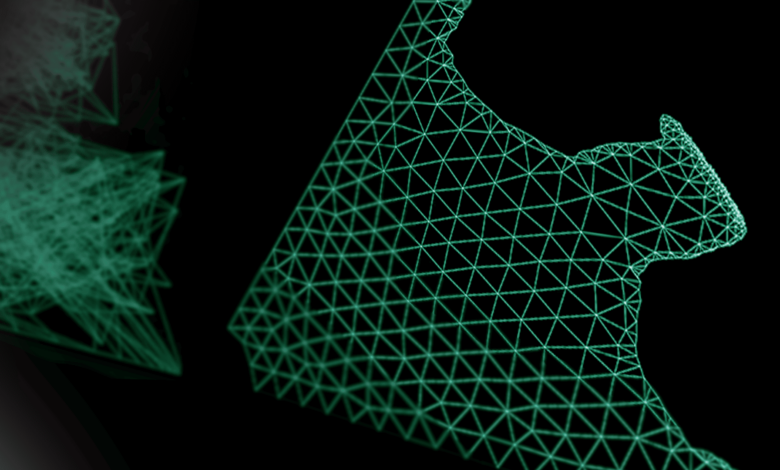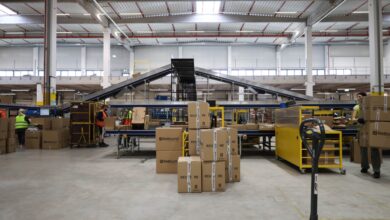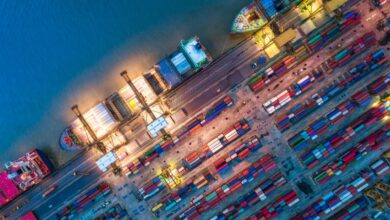
Rare earth minerals (REMs) are essential components of many technologies – everything from smartphones and electric vehicles to aerospace and defence. In today’s volatile geopolitical environment, technological superiority has become a key differentiator. Amidst this high-stakes competition, REMs have moved to the forefront of governmental priorities, as they have become critical in safeguarding, through the protection of national supply chains in order for countries to maintain their technological edge.
Europe’s investment in technology is approximately one-fifth of that in the US and half that in China. As global competition heats up, Europe must find alternative ways to remain competitive globally. Looking beyond REMs may well be vital to that goal.
Overreliance on China
Europe currently relies heavily on China for its REM supply. Over 98% of EU imports come from the country, which controls over 80% of global production capacity. China’s control over these resources gives it significant economic and political leverage over the EU. It can also influence global prices and supply, creating market distortions and uncertainties for European industries.
The EU has initiated several strategies to diversify away from China. The Critical Raw Materials Act set objectives for 2030, including sourcing at least 10% of its annual consumption from within the EU, processing 40%, and meeting 25% of demand from recycling.
Some deposits of rare earths have been identified in countries like Sweden, Finland, and Norway, but the infrastructure for mining and processing these minerals is underdeveloped. There is no doubt that Europe must decrease the geographical concentration of its imports and establish more resilient local supply chains. However, there are a number of other issues associated with REMs, which should prompt a movement towards alternative solutions.
Costly and unsustainable
Whether due to China’s domestic policies, global energy demands, or geopolitical tensions, REM prices are often volatile, and production costs are high, quite apart from their environmental impact. Beyond this, the concentration of REM supply also deters investment in alternative supply chains due to the unpredictable nature of pricing mechanisms. Developing technologies that are less dependent on REMs would prevent the impact of these supply chain vulnerabilities and reduce costs for technology developers across various industries.
For instance, electric motors are critical to electric vehicles and renewable energy technologies, but many depend heavily on REMs such as neodymium and dysprosium. Approximately 80% of modern EV drivetrains rely on high-performance rare earth magnets. Removing the need for these materials could lead to crucial cost reductions, driving widespread EV adoption and paving the way towards cleaner transport.
Beyond this, REM mining also causes severe damage to the environment, including water contamination, biodiversity loss, and radioactive waste. The mining process often involves open-pit mining, which produces a lot of toxic waste and contaminates air, water, and soil. Additionally, it is energy-intensive and relies on hazardous chemicals that further exacerbate environmental degradation. By diversifying away from REMs, Europe can accelerate its progress towards net zero while promoting technological advancement.
It is time to refocus efforts across the continent on R&D in alternative materials and innovative technologies, specifically AI and Machine Learning, rather than solely the supply of REMs. In doing so, we can decrease production costs, work towards more sustainable practices and ensure that European tech companies are competitive globally.
How to solve a problem like the REM cycle
Questioning traditional methods and discovering new solutions is at the heart of technological innovation.
Rather than pursuing access to scarce and environmentally damaging materials, AI and other deep tech innovations have the potential to significantly impact how we approach complex engineering problems. Whether in automotive, aerospace, or energy generation, AI and Machine Learning are redefining engineering and design at a system level.
We’ve now reached a point where AI has surpassed the capabilities of human engineers in terms of the volume, performance and speed of producing new designs. By exploring hundreds of thousands of prototype designs in a matter of days and generating alternative design options, OEMs and engineering companies can significantly reduce or eliminate the need for rare earths in many applications.
Even more importantly, saving all the data from these simulations will create new and unique datasets to train ‘foundational models’ within engineering. Over the next few years, we will see less focus on the human-mimicking ‘Large Language Models’, which are restricted to the language, text, and images available online, towards more focused and efficient models that can enhance human abilities. Particularly within engineering, the petabytes of data we are collecting will transform the way humans invent.
While REMs continue to dominate the conversation, the time is now to invest in deeptech solutions and carve a new path. Utilising AI to optimise manufacturing processes, discover alternative materials, and design more efficient products could offer European industries an edge at a crucial juncture.



